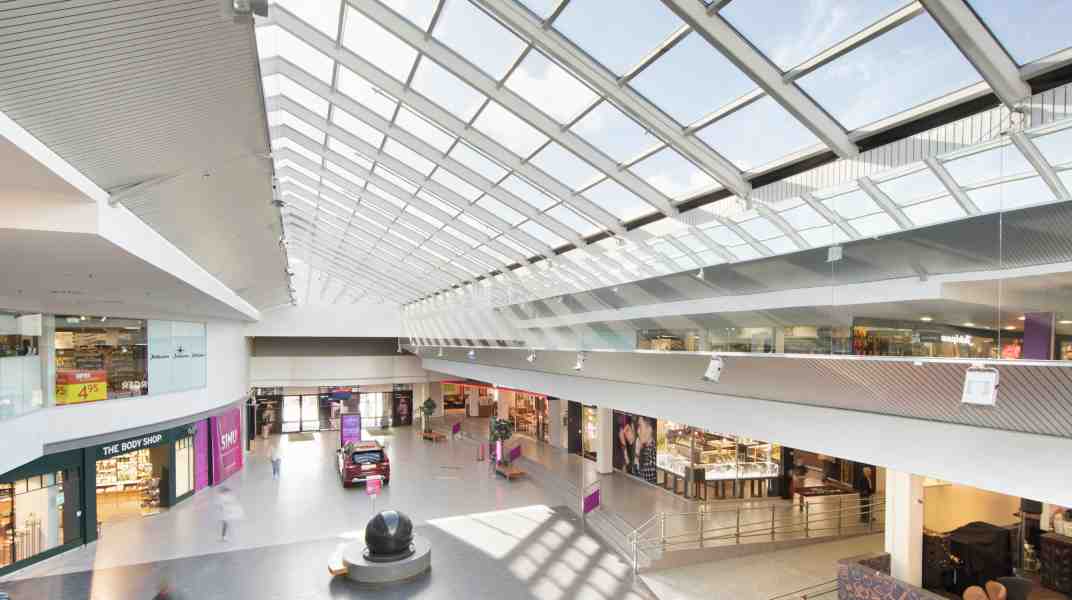In support of biodiversity and local nature, we have provided homes for bees on the rooftops of Iso Omena, Myyrmanni, IsoKristiina and Liertoppen centres.
The bee communities on our rooftops have been busy throughout the summer, taking great care of the surrounding areas by pollinating flowers and plants. However, as the summer has turned to autumn and nature has started to prepare for winter, the gentle buzzing of bees has subsided. This means it’s time for the harvest.
“We got a sweet reward this autumn as we collected hundreds of kilos of honey from the beehives at our centres. In Myyrmanni alone, the bees produced 80 kilos of honey, which is a huge amount,” says Thomas Stenius, Property Manager at Citycon.
Each centre has had different ideas for utilising the honey. Honey has been delivered to restaurants, where people can enjoy it with a steaming cup of tea. Honey jars have also been given to the personnel working in the centres and raffled off among customers.
“It’s important to us that local honey in one form or another can be consumed by locals,” emphasises Thomas.

The bees collect nectar from flowers, which they then convert into honey. Therefore, the taste and appearance of the honey is strongly influenced by environmental conditions. For example, Myyrmanni is located in Myyrmäki, Vantaa, next to a small nature conservation area and a river with some rare species. Liertoppen, on the other hand, is located in Lier, in the Buskerud region, in a unique natural area with flowering meadows, fields and nectar that will ensure honey of the finest quality.
“Even in the built environment there is lots of greenery, trees and shrubs that bloom throughout the growing season. Different species bloom in different areas, and this can also be tasted in the honey, which we noticed in a taste test that compared Iso Omena honey and Myyrmanni honey,” says Thomas.
The bees are buzzing at several centres
The bees have been buzzing on the Iso Omena rooftop for two summers now. At other centres, this was the first bee summer.
“We had just established our first solar power plant on the roof of Iso Omena and started to think about what else we could do to utilise the free space on shopping centre roofs. We came up with the idea of rooftop beehives and contacted a local beekeeper to find out whether it would be possible,” explains Thomas, who was the mastermind behind the beehive idea.

Property Manager Thomas Stenius as a beekeeper apprentice under the watchful eyes of Master Beekeepers Mika Olsbo and Tanja Oreto. Here the bees are given a sweet treat in the beginning of spring to help them get a good start on the season.
The idea proved to be feasible and, together with local beekeepers, we have set up beehives on the roofs of four Citycon centres.
“We have only positive experiences and plan to bring them to other centres in Finland, and we are also investigating the possibilities in other countries.”
Pollinators are vital for the environment
Bees support the biodiversity of nature by pollinating plants and trees. The bee communities are effective pollinators – one farmed nest can contain more than 60,000 bees in midsummer, and one bee can fly 600 kilometres during its lifetime. The flight radius can be several kilometres from the beehive.

However, the number of pollinating insects in the world has declined, and many species of pollinators are endangered today. This is due to the use of pesticides, land use change and climate change, among other factors. Although farmed beehives might not fully compensate for the disappearance of pollinators or wild bees, they are one way of supporting the well-being of local nature. Setting up beehives on rooftops is part of Citycon’s sustainability strategy.
“In addition to increasing the well-being of local nature, they bring us and the communities a lot of joy. We have also wanted to raise awareness of the importance of pollinators among the local community, which can have further positive effects. In Myyrmanni, we have also involved our next-door school,” says Thomas.
The well-being of pollinators can be improved by choosing bee-friendly plants and flowers on balconies and avoiding pesticides in gardens, to name just a couple of positive actions.
“Also, we would be happy to see other property owners welcoming bees as residents because beekeeping can be done basically anywhere. The bees are good neighbours that will not cause any harm, unless their beehive is disturbed,” says Thomas.
Bees stay in the hive for the winter
With the onset of autumn, bee colonies shrink slightly. The bees winter in their hives, but they do not go into hibernation – the remaining bees maintain the hive and form a nest around the queen, known as a winter cluster. The bees also shake their wing muscles to keep the hive warm throughout the cold season. Also, the need for maintenance by the beekeeper decreases during the winter.
“In the summer, the beekeeper visits the hive weekly to check the bees and brings more discs to enlarge the nest as the volume of honey increases. After the harvest, the bees get sugar broth for the winter. At Christmas, the beekeeper goes back to check on the bees and provides ’Christmas food‘ that protects against varroa mites,” explains Thomas.
To ensure good wintering conditions, a cloth hood is placed on top of the hive to protect it against blizzards and birds. Then, when the first sunny and warm spring day arrives, the buzzing and pollinating begins once again – to the delight of both nature and local communities.

Sources:
Mika Olsbo, beekeeper
https://www.un.org/en/observances/bee-day
https://www.vantaa.fi/vapaa-aika/luonto_ja_ulkoilu/puistot_ja_viheralueet



